Science in space, society and synchrotrons Understand article
Science in School is published by EIROforum, a collaboration between eight of Europe’s largest inter-governmental scientific research organisations (EIROs). This article reviews some of the latest news from EIROs.
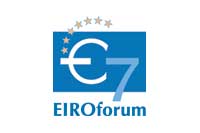
EIROforum
EIROforum combines the resources, facilities and expertise of its member organisations to support European science in reaching its full potential.
EFDA-JET: Fusion videos and teacher resources
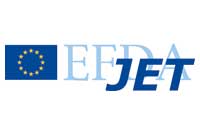
With the help of the European Fusion Development Agreement (EFDA), you can now bring fusion research right into your classroom, with a series of short videos complete with teacher resources. The videos are based on new hands-on exhibits built for EFDA’s travelling exhibition, Fusion Expo. They feature not only the demonstrations themselves, but also visits to related facilities at the Joint European Torus (JET, currently Europe’s largest fusion experiment), as well as interviews with scientists and engineers working in fusion research.
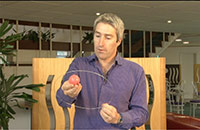
EFDA -JET’s new educational
videos, gets hands-on with
some electromagnetic theory.
Image courtesy of EFDA-JET
The topics will include:
- Fusion forces roller coaster
- Cyclotronic! Magnetic orbits
- Natural toruses – smoke rings
- Real-life avatar – remote handling technology
- Jacob’s ladder – controlling lightning
- Superconductors for supermagnets.
The videos and teacher resources are available on the EFDA website. The videos can also be found on EFDA’s Youtube channel and Facebook page. Learn more about the Fusion Expo and if it will be visiting your area soon.
Situated in Culham, UK, JET is Europe’s fusion device. Scientific exploitation of JET is undertaken through the EFDA.
EMBL: Flu spreads in the café scientifique
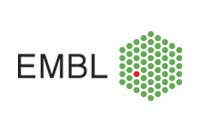
On 10 October 2012, nearly 50 people gathered in the centre of Grenoble, France, for a relaxed and interesting discussion on medical and research issues related to flu. The occasion? The first café scientifique co-organised by the European Molecular Biology Laboratory (EMBL) and the Café Sciences et Citoyens de l’Agglomération Grenobloise.
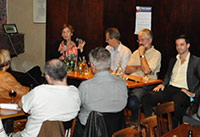
Agathe Billette de Villemeur,
Alain El-Sawy, Rob Ruigrok.
Moderator: Benjamin Piton
Image courtesy of J-Ph Vincent
CSCAG
Three panellists – Rob Ruigrok, research director on influenza at the Université Joseph Fourier, Grenoble, and a member of the Flupharm project; Alain El-Sawy, general practitioner and member of GROG, the French national flu monitoring network; and Agathe Billette de Villemeur, public health expert – engaged in a lively discussion with the audience. From vaccination efficiency to research goals, through decision-making for public health policies and standard medical practice, the debate touched on all the important questions surrounding the influenza virus and helped place research projects such as Flupharm in a wider social context.
Flupharm is an EU-funded project involving EMBL scientists that aims to develop effective drugs against influenza. It is a follow-up from the FLUPOL project, on which Science in School reported:
Ainsworth C (2009) Outmanoeuvering influenza’s tricks. Science in School 11: 25-29.
EMBL is Europe’s leading laboratory for basic research in molecular biology, with its headquarters in Heidelberg, Germany.
ESA: Astronauts underground and underwater
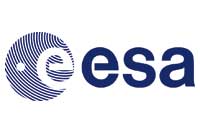
In small multicultural teams cut off from the rest of the world, astronauts have to perform physically and mentally demanding tasks. In 2012, two international teams went underground and underwater to train their skills.
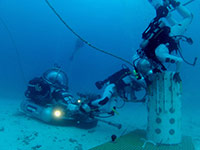
NEEMO.
Image courtesy of NASA / ESA
/ H Stevenin
One group of six became ‘cavenauts’ for the 6th CAVES mission led by the European Space Agency (ESA). In the extreme environment of a cave system 200 m below the surface, they spent six days in Sardinia, Italy, linked to the outside world only through the mission’s ground control. In addition to mapping the partly unexplored caves, the astronauts catalogued all the life forms they found.
On Earth, diving is one of the best ways of simulating the weightlessness of space. For this reason, another team of six, including ESA’s Timothy Peake, became ‘aquanauts’ on the NASA-led NEEMO 16 mission – investigating the best way for astronauts to explore asteroids. They spent twelve days 20 m under the sea at the world’s only undersea research station, in Aquarius off the coast of Florida, USA. To make the mission more realistic, communication between the aquanauts and ground control was delayed by 50 seconds to simulate the time delay in transmitting messages across the Solar System.
In addition to the main mission, the astronauts performed educational experiments that were repeated on land, to study the effect of the high underwater pressure. Videos of these experiments are available on Youtube.
The ESA website offers more information on the CAVES mission and further details of the NEEMO mission. ESA is Europe’s gateway to space, with its headquarters in Paris, France.
ESO: The star-spangled centre of the Milky Way
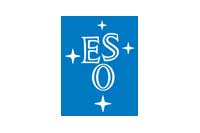
In October 2012, an international team of astronomers released a catalogue of more than 84 million stars in the centre of the Milky Way. Collected using the VISTA infrared survey telescope at the European Southern Observatory (ESO)’s Paranal Observatory in Chile, this gigantic nine-gigapixel image contains more than ten times as many stars as previous studies.
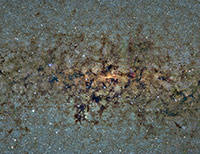
(detail), as observed with the
VISTA survey telescope.
Image courtesy of ESO / VVV
Consortium
It is a major step in understanding our home galaxy, giving viewers an incredible, zoom-able view. It is so large that, if printed with the resolution of a typical book, it would be 9 m long and 7 m tall. “By observing in detail the myriad of stars surrounding the centre of the Milky Way, we can learn a lot more about the formation and evolution of not only our galaxy, but also spiral galaxies in general,” explains Roberto Saito, lead author of the study.
For more information, see the press release on the ESO website. Also available on the ESO website, the image is too large to be easily displayed at full resolution and is best appreciated in a zoom-able view.
ESO is by far the world’s most productive ground-based astronomical observatory, with its headquarters in Garching near Munich, Germany, and its telescopes in Chile. ESO is the European partner in the ALMA project, which is a collaboration between Europe, North America and East Asia, in co-operation with the Republic of Chile.
ESRF: Investigating the embryonic development of the dinosaurs
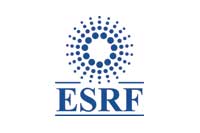
We all know that the dinosaurs died out millions of years ago, don’t we? Wrong! In fact, we see living dinosaurs every day; some of us even keep them as pets. Strictly speaking, the group Dinosauria comprises not only the extinct creatures we traditionally consider to be dinosaurs, but also birds. The dinosaurs themselves are part of a larger group – the Archosauria, which also include crocodiles and their relatives, and which were the dominant groups of vertebrates in the Mesozoic era (250-65 million years ago).
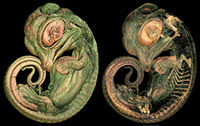
Nile crocodile (Crocodylus
niloticus), measuring 1.4 cm
across. Left: The external
morphology of the animal.
Right: A semi-transparent
view of its skeletal
mineralisation.
Image courtesy of Martin
Kundrát (Uppsala University)
and Paul Tafforeau (ESRF)
So how did the first heavy, scaly, cold-blooded, quadrupedal archosaurs evolve into modern birds – light, feathered and warm-blooded? Most of these evolutionary innovations resulted from changes in the molecular programming that determines how different tissues in the embryo develop. In an attempt to turn back the clock to study these changes, a research team led by Martin Kundrát from Uppsala University, Sweden, are comparing the two extant groups of archosaurs: birds and crocodiles. By studying the differences in the embryonic development, they hope to learn how those innovative characteristics originated and made birds such successful animals.
Very young crocodile and bird embryos look similar. To better understand when and where the developmental differences occur, the team are taking 3D images of the embryos as they develop inside their eggs, using brilliant X-ray beams at the European Synchrotron Radiation Facility (ESRF) in Grenoble, France. This will help them to understand the embryonic life not only of birds and crocodiles, but also of their ancient relatives.
Situated in Grenoble, France, ESRF operates the most powerful synchrotron radiation source in Europe.
European XFEL: Crystal-clear laser light
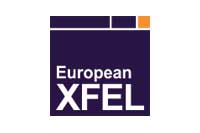
How do you make the world’s brightest X-ray lasers even better? Led by Gianluca Geloni, scientists at European XFEL and DESY in Hamburg, Germany, have proposed using tiny diamond crystals to improve X-ray free-electron lasers (XFELs).
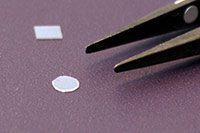
in the experiment are
impressive for their spectral
cleaning abilities, not their
sparkle.
Image courtesy of European
XFEL
All lasers, be they the small ones in DVD players or the 3 km ones being constructed at European XFEL, amplify light: a small seed of light is transformed into a powerful laser beam. When X-ray laser light is generated, spontaneous emissions are used as seeds, which amplify into a spectrum of X-ray wavelengths.
Unfortunately, this ‘rainbow’ can result in blurred pictures. Gianluca Geloni and his team, therefore, suggested sending the light created by spontaneous emissions through a diamond to select a narrow part of the spectrum. This seed of filtered light could then be further amplified and the resulting flashes used for taking extremely sharp images of biomolecules, materials or chemical reactions. Because the seed is not created by an external source but by the laser itself, the process is known as self-seeding.
Such flashes have now been created for the first time at the Linac Coherent Light Source X-ray laser facility in Stanford, California, USA, following the original suggestion of the Hamburg researchers (Amman et al., 2012). Researchers from all over the world are now waiting for the technology to be further developed.
Amman et al. (2012) Demonstration of self-seeding in a hard-X-ray free-electron laser. Nature Photonics 6: 693–698. doi: 10.1038/nphoton.2012.180
Geloni G et al. (2011) A novel self-seeding scheme for hard X-ray FELs. Journal of Modern Optics 58(16): 1391-1403. doi: 10.1080/09500340.2011.586473
A freely available version of this article was published in 2010 in Arxiv.
For more detailed information, see the press release on the European XFEL website.
The European X-ray Free Electron Layer (European XFEL) is a research facility currently under construction in the Hamburg area in Germany. Its extremely intense X-ray flashes will be used by researchers from all over the world.
ILL: Bending gamma rays – a door to a whole new field of science
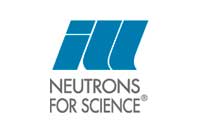
According to decades of theoretical predictions, it should not be possible to create lenses for gamma rays. Until recently, it was thought that this highly energetic form of light, produced by the radioactive decay of atomic nuclei, was too energetic to be bent by the electrons in any lens material. Nonetheless, scientists at the Institut Laue-Langevin (ILL) decided to attempt the impossible – and succeeded. In a variation of the classical classroom experiment with glass prisms, first used by Newton in 1665, they used a silicon prism to successfully bend a beam of gamma rays, albeit by just a millionth of a degree.
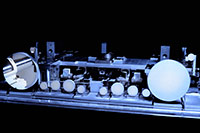
with which the gamma rays
were produced.
Image courtesy of Bernhard
Lehn
This has opened the door to a whole new field of science, called nuclear photonics. Scientists can now study what is at the heart of this unexpected effect and work on refining the lenses. Focused gamma-ray beams would be scattered only by certain radioisotopes, streaming past others unimpeded; this could be used to characterise radioactive material remotely.
Moreover, the beams could even make new isotopes, ‘evaporating’ protons or neutrons from existing samples. This could be used to turn harmful nuclear waste into a harmless, non-radioactive material, or to provide more targeted radioisotopes for cancer diagnostics and treatment.
To learn more, see the press release on the ILL website or read the research paper:
Habs D et al. (2012) Refractive index of silicon at ? ray energies. Physical Review Letters 108: 184802-1-4. doi: 10.1103/PhysRevLett.108.184802
ILL is an international research centre at the leading edge of neutron science and technology, based in Grenoble, France.






